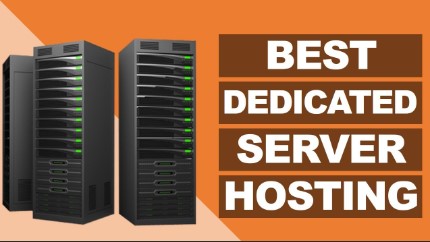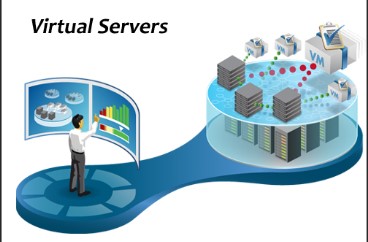Fully Managed Server
In the fast-paced realm of modern IT infrastructure, a fully managed server represents more than just a convenience—it’s a strategic choice that can elevate operational efficiency and security protocols.
Understanding what constitutes a fully managed server and the benefits it offers is crucial for businesses aiming to optimize their digital presence.
- What is a Fully Managed Server? A fully managed server refers to a comprehensive hosting solution where the service provider assumes responsibility for the entire gamut of server management tasks, from setup and configuration to ongoing maintenance and support. This hands-on approach allows businesses to focus on core operations while leveraging expert management for their critical IT infrastructure.
- Benefits of Opting for Fully Managed Services
Opting for fully managed services brings numerous advantages, including heightened security measures, proactive maintenance routines, and round-the-clock technical support. These benefits collectively enhance reliability, scalability, and operational continuity, crucial for businesses of all sizes.
Understanding Fully Managed Servers
Understanding fully managed servers involves grasping the comprehensive range of services and benefits they offer to businesses seeking robust IT infrastructure solutions.
- Definition and Scope of Fully Managed Servers
A fully managed server is a complete hosting solution where the service provider assumes responsibility for all aspects of server management. This includes hardware setup, software installation and updates, security enhancements, performance monitoring, and troubleshooting. Essentially, clients delegate the day-to-day operational tasks to experts, allowing them to focus on core business activities without the burden of IT administration. - Key Features and Inclusions
Managed servers typically encompass a suite of essential features tailored to ensure optimal performance and reliability. These may include continuous monitoring of server health metrics to detect anomalies and potential issues proactively. Automated backups and data recovery mechanisms safeguard against data loss, while robust security measures such as firewall management, intrusion detection systems (IDS), and regular security audits fortify defenses against cyber threats. - Differences Between Managed and Unmanaged Servers
Contrary to unmanaged servers where clients retain full control and responsibility for server administration, managed servers provide a hands-off approach. Managed services involve a dedicated team of IT professionals who oversee server operations around the clock. This proactive management ensures that servers are consistently updated with the latest patches and optimizations, minimizing downtime and maximizing performance. In contrast, unmanaged servers require clients to handle all technical aspects, including software installation, security updates, and troubleshooting, which can be time-consuming and technically demanding.
Understanding the nuances of fully managed servers empowers businesses to make informed decisions about their IT infrastructure needs.
By opting for managed services, organizations gain access to expertise, proactive support, and enhanced security measures that contribute to operational efficiency and growth.
- Definition and Scope of Fully Managed Servers
A fully managed server entails the outsourcing of server administration and management duties to a specialized hosting provider. This includes hardware setup, software installation, security patching, performance monitoring, and troubleshooting tasks. - Key Features and Inclusions
Key features typically encompass continuous monitoring of server health metrics, automated backups, antivirus protection, and firewall management. Additionally, managed servers often include proactive responses to potential issues before they impact performance or security. - Differences Between Managed and Unmanaged Servers
Contrasting with unmanaged servers where clients retain full control and responsibility for administration, managed servers offer comprehensive oversight by a dedicated team. This distinction ensures that businesses can delegate complex IT tasks while focusing on strategic initiatives.
Advantages of Using a Fully Managed Server
- Enhanced Security and Monitoring
Managed servers benefit from robust security protocols such as intrusion detection systems (IDS), regular security audits, and timely application of patches to mitigate vulnerabilities. Continuous monitoring ensures prompt identification and resolution of potential threats. - Proactive Maintenance and Updates
Regular maintenance tasks, including software updates, server optimizations, and database management, are performed proactively by the service provider. This proactive approach minimizes downtime risks and enhances system performance. - 24/7 Technical Support Availability
Access to round-the-clock technical support from experienced professionals ensures rapid resolution of technical issues and proactive guidance during critical incidents. This support framework is essential for maintaining uptime and addressing emergent challenges promptly.
Choosing the Right Fully Managed Server Provider
- Factors to Consider When Selecting a Provider
– Service Level Agreements (SLAs)
SLAs outline service commitments regarding uptime guarantees, response times for support requests, and escalation procedures. Clear SLAs provide transparency and accountability.– Scalability and Customization Options
Assessing scalability options ensures that the server solution can accommodate future growth in data volume, user traffic, and application requirements. Customization capabilities allow tailoring of server configurations to align with specific business needs.– Reputation and Customer Reviews
Evaluating the provider’s reputation through customer testimonials, reviews, and industry recognition provides insights into service reliability, customer satisfaction levels, and overall service quality.
Deployment and Setup Process
- Initial Consultation and Requirements Gathering
The deployment process begins with a thorough consultation to understand business objectives, technical requirements, and regulatory compliance needs. This phase sets the foundation for crafting a tailored server solution. - Server Provisioning and Configuration
Following requirements analysis, the service provider procures hardware, installs necessary software components, and configures the server environment to optimize performance and security parameters. - Migration Assistance (if applicable)
Seamless migration of existing data and applications from legacy systems to the new managed server environment is facilitated with minimal disruption. Comprehensive migration strategies ensure data integrity and operational continuity.
Cost Considerations and ROI
- Pricing Models for Fully Managed Services
Pricing models for managed services vary based on resource allocation, service level agreements, and additional features such as backup solutions and disaster recovery plans. Transparent pricing structures aid in budget planning and cost optimization. - Calculating Return on Investment (ROI)
Assessing ROI involves evaluating the tangible benefits of managed services, including reduced operational overhead, enhanced system reliability, and improved productivity resulting from proactive IT management. ROI calculations inform strategic decisions regarding IT expenditures. - Long-term Cost Savings and Benefits
Long-term benefits encompass cost savings derived from minimized downtime, efficient resource utilization, and optimized IT performance. Enhanced security measures mitigate risks associated with data breaches and regulatory non-compliance, safeguarding business continuity.
By exploring these facets of fully managed servers comprehensively, businesses can make informed decisions that align with their operational goals and IT infrastructure requirements.
Leveraging managed services not only enhances technical capabilities but also fosters agility and resilience in an increasingly competitive digital landscape.





